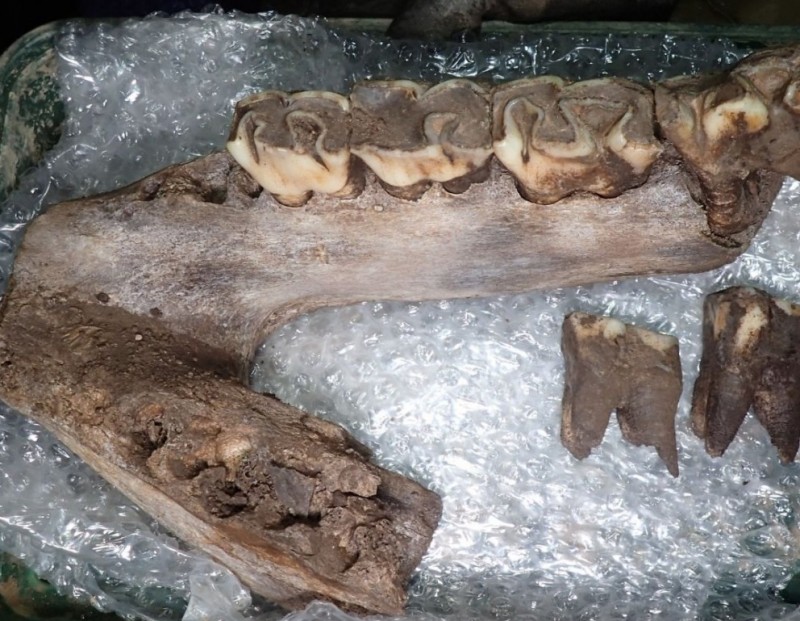And finally… ‘Megafauna’ archaeological finds discovered in Devon
A number of rare and nationally significant discoveries offering a unique glimpse of Ice Age Britain have been made during archaeological investigations at the site of a new town in Devon.

The remains at Sherford have been painstakingly recovered by a specialist and highly skilled team from across the UK, and are now being analysed. Initial findings confirm that the well-preserved remains of several species of animals have been found, including woolly mammoth, woolly rhinoceros, wolf, hyena, horse, reindeer, mountain hare and red fox.
The ‘megafauna’ – large animals now extinct – that have been found are estimated to be from the last Ice Age, around 30,000-60,000 years ago in the Middle Devensian period, when temperatures were generally colder than today. It is hoped the Sherford discoveries will provide new insights into early Britain and enrich what is already known. Understanding the range of mammals present, particularly herbivores and their food sources, also provides an insight into the plants that may have existed in the local environment, for which little evidence survives today.
Sherford is a new 5,500-home community under development on the edge of Plymouth, already home to over 1,500 people. The Sherford Consortium – a partnership of Taylor Wimpey and Vistry Partnerships – instigated archaeological work at the start of construction in 2015 and have remained committed to funding an ongoing programme of archaeological investigation ever since. Excavation during infrastructure work led to the discovery of these animal remains, in an area near old lime kilns and Sherford Quarry.
Over recent months, the archaeological team has conducted a detailed scientific sampling exercise to obtain as much information about the findings as possible. The work has been led by an expert team that includes Orion Heritage, Exeter-based AC Archaeology, and multiple expert academics, supported by the South West Science Advisor from Historic England. The project has involved a close partnership with Devon County Council’s Historic Environment Team – as archaeological advisors to South Hams District Council – and the programme of investigations has been informed by specialist advice and expertise from the local archaeological and geological community.
The animal bones and environmental samples have been carefully recorded and removed from the ground and are now undergoing academic analysis and conservation. It is expected that the full archive of remains will return to Devon, into the care of The Box – Plymouth’s new museum – just a few miles from where they were uncovered.
The Sherford Consortium will preserve the area where the remains have been found. The underground space will be conserved, and no construction will take place on top of it. However, the entrance will be closed to both protect the historic site and ensure public welfare. It is not, nor will be, possible for the public to safely access the area in which the discoveries have been made.
Rob Bourn, managing director of Orion Heritage and lead archaeologist on the project for the Sherford Consortium, said: “This is a major discovery of national significance – a once in a lifetime experience for those involved. Construction happening at Sherford is the sole reason these findings have been discovered and it is remarkable that they have laid undisturbed until now. To find such an array of artefacts untouched for so long is a rare and special occurrence. Equally rare is the presence of complete or semi-complete individual animals. We look forward to reaching the stage where the discoveries can be shared and displayed, so that everyone can find out more about our distant past.”
Duncan Wilson, chief executive of Historic England, said: “This discovery is exceptional. To have found partial remains of such a range of species here in Devon gives us a brilliant insight into the animals which roamed around Ice Age Britain thousands of years ago, as well as a better understanding of the environment and climate at the time. We are delighted that this important part of our history will be preserved for future generations.”


















